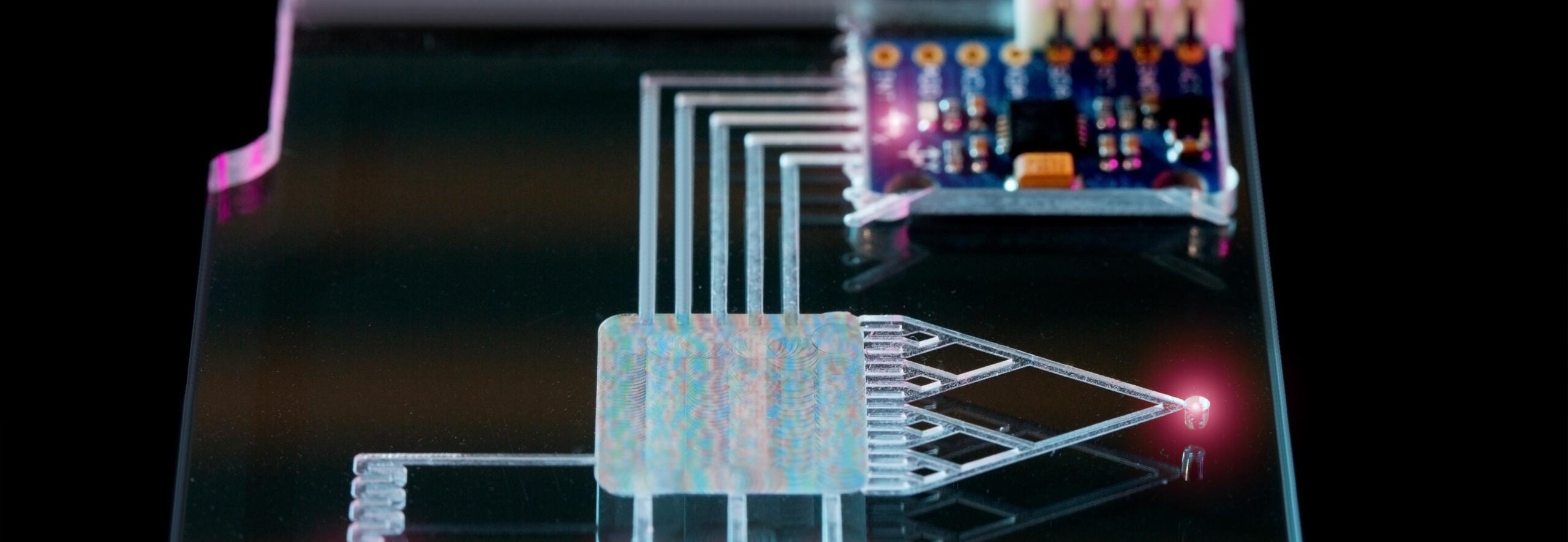
Applications for laser welding in the medical technology sector have received growing attention in recent years.
Since 2018, according to GlobalData, there have been 19 new patents relating to laser welding in the area of general surgery and 14 for neurology devices.
Some of these are already resulting in innovative new products. The iBIONICS Diamond Eye, an implantable, bionic visual prosthesis intended for the treatment of degenerative retinal diseases, is scheduled to enter the market in 2024. The device uses laser welding to seal its ASIC chip and electrode array in a diamond package.
Among the most promising new applications for the technology are in the area of Covid-19 testing.
Since early 2020, when Covid-19 tests were first rolled out en masse, governments and consumers have faced a choice between accuracy and convenience.
Rapid lateral flow tests are able to deliver results quickly and at the point of care, but suffer from severe accuracy issues. PCR tests, by contrast, have proven far more reliable but must be sent to a laboratory for processing, limiting their usefulness in testing for entry to venues and public transport.
By incorporating microfluidic technology, however, researchers have been able to develop a new type of PCR that can process results in just ten minutes at the point of care.
The mass production of rapid PCR tests is likely to be the latest source of demand for laser welding in the medical technology sector.
Microfluidic devices are produced as molded layers, which must be accurately joined together. The delicate nature of the task makes the use of adhesives impractical, meaning that manufacturers have had to rely on plastic welding techniques.
Ultrasonic welding, in which high frequency vibrations under pressure are used to combine the layers, is low cost but not suitable when accuracy is essential - the process can generate small particles, and doesn’t deliver a precise or homogenous height reduction of the layers.
Instead, manufacturers are turning towards laser welding. The Coherent ExactWeld IP laser machine has a particularly high force range, allowing users to accurately select any force level between 100 and 4500 Newtons.
As well as precisely measuring the force applied, the machine contains a linear encoder which measures the height reduction of the layers within micron accuracy.
The development of rapid PCR tests is just one example of the innovation occurring in applications of microfluidics.
Figures from GlobalData show that 272 patents relating to microfluidics have already been published so far in 2021, adding to the 1,103 published since 2018. Almost a quarter of the patents have been for drug delivery devices (24%), with one fifth being related to general surgery applications (20%).
There are currently 247 related products in the pipeline, including a 3D printed artificial lung currently being developed by US Ann Arbor Healthcare Systems.
Microfluidics are not the only application of laser welding seeing rapid innovation, however. Hypotubes are another major application of the technology, and are seeing growing interest from medical technology manufacturers in a broad array of areas.
Hypotubes are extremely small, hollow and flexible tubes used in minimally invasive surgeries, with applications including the control of tools and delivery of drugs.
Flexibility is essential for a hypotube to function effectively, and is achieved through a pattern of cuts in its walls. Such delicate manufacturing processes typically required advanced laser technology.
Femtosecond lasers, in particular, are particularly effective as they deposit their energy so rapidly that the heat cannot spread. The result is relatively smooth edges, limiting the required post-processing to water cleaning.
The Coherent ExactWeld is an industry leader in this area, with an easy-to-use user interface allowing for the easy handling of small and large batches of medical products. The ExactWeld comes with the smallest footprint of any such laser machine on the market, minimising the use of valuable clean room space.
With a wide array of applications in cutting-edge medical technology product lines, laser welding is an increasingly vital part of the sector’s future.


